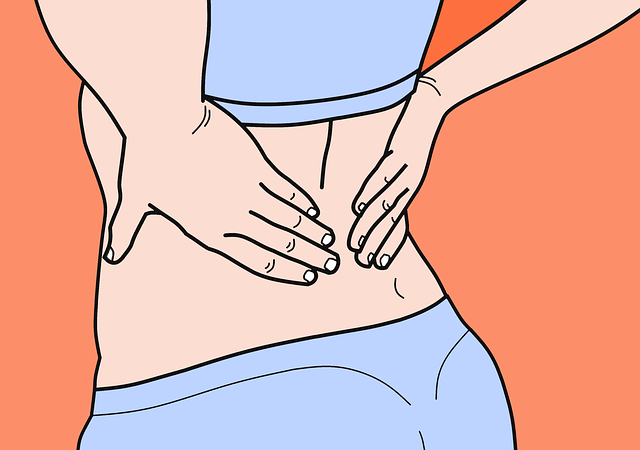Cannabis and back pain

Its estimated that 50 million Americans live with some sort of chronic pain. This pain could be related to a muscle injury, side effect of a severe disease or even a simple headache. Doctors have always been looking for alternative pain remedies for patients and cannabis might just be the plant that potentially cures it all.
Cannabis has been used as both a nutritional supplement and medical treatment for millennia and the cannabis plant was first documented by the Chinese early, around 3000BC. It was listed in their book of Pharmacopoeia as one of the top medicinal herbs used for treatments of gout, stomach issues and pain. Since then cannabis has been used by many cultures to treat many conditions and diseases and only during the most part of the 20th century was it outlawed and banned. Previous to the 20th-century cannabis was widely administered by doctors as a treatment for many simple medical conditions. With the signing of the Marijuana Tax Act of 1937, this was the final nail in the cannabis coffin of the 20th century. Until California legalized cannabis for medical adult use in 1996, cannabis was seen as an illegal drug with no medical value and potential for abuse.
Until today the United States federal government still lists cannabis as a Schedule 1 drug, alongside with LSD and heroin. However, the US Food and Drug Administration recently took a huge step in the right direction and approved their first cannabis-based medicine, known as Epidiolex, which is used to treat rare epileptic conditions and associated side effects such as seizures. The FDA approved the drug federally and reported that their benefits of Epidiolex used as a treatment for a condition known as Dravet Syndrome. In fact, cannabis has been used for some time as a treatment to prevent seizures in patients suffering from side effects such as seizures.
Public demand and opinion suggest cannabis may be used for many other conditions and diseases and it is a well-known anti-inflammatory and pain management solution. Regardless of the laws and wars being fought over cannabis in the last century, millions of people continued to use cannabis as a treatment for pain, cannabis actually thrived in these dark ages and governments had to open the gates for progressive discussion about liberating cannabis laws.
Due to the prohibition of cannabis for so many years, there is still a lack of scientific evidence that supports cannabis as an alternative medicine. However, PubMed has published over 2000 scientific studies on cannabis and the results are alarmingly positive. Scientists these days now have the freedom with liberalized laws to privately study cannabis and its benefits. We are still uncertain as to exactly how cannabis works, but the evidence is slowly building up.
Endocannabinoid System
Our endocannabinoid system ( ECS ) was only discovered due to studies of cannabis. It was named after the fact of discovering cannabinoids such as a cannabidiol ( CBD ) and tetrahydrocannabinol ( THC ) and how these cannabis compounds interacted with our bodies. It was discovered already in the late 1970’s and early 1980’s that the primary cannabinoids of cannabis interacted through our bodies via thousands of receptors located within our ECS. Our ECS is made up of both our immune and nervous system and is responsible for daily bodily functions such as mood, movement, memory, appetite and especially pain management.
THC vs CBD
Both these cannabinoids are only slightly different in their molecular makeup, they act similarly on the receptors but have varying different effects on us. Most notably THC major effect is its psychoactive effect after absorbing it into your bloodstream, whereas CBD is non-psychoactive.
When people ingest or inhale THC it stimulates the ECS’s receptors, especially the receptors found in the brain. This activates the brains reward system and effectively reduces pain symptoms through the production of much needed natural hormones, such as anandamide, which is also known as the “bliss molecule”. CBD, on the other hand, does not interact with the receptors the same as THC, it actually inhibits the effects of the psychoactive effects of THC, but also interacts with the brain and exerts pain-reducing and anti-inflammatory effects.
There is also a big difference with the legality of both cannabinoids. CBD is legal in roughly 50 states in America while THC is only legal in 8. Although the federal government has backed one cannabis-based medicine, Epidiolex, this in turn still slows down the pace at which the cannabis industry is developing. As many state universities require national funding from the federal government, much of this cannabis research funding could be withdrawn if anything breaches the limitations of federal law.
“In the state of Colorado [which allows medical and adult private use], I can go to any dispensary and buy whatever I want to treat whatever I want,” says Bryan, who’s also co-director of the CU Change Lab, which explores health and risk behavior. “You would think that means researchers can, too. The problem is, researchers are in a federal institution [at the University of Colorado]. If we do anything in violation of federal law, we could have all federal funding withdrawn.” – Angela Bryan, PhD, professor of psychology and neuroscience at the University of Colorado
Common causes of back pain

Common back pain can be caused by poor posture, ageing, wear and tear and even stress. The common back is considered “acute” according to the Mayo Clinic if back pain is experienced fewer than for 6 weeks, while chronic back pain is defined as 3 months or more. Chronic back pain is a lot more serious and usually stems from slipped discs or trapped nerves. The cause of chronic pain is usually the result of an old sports injury, motor accident, slipping or tripping and is the result of too much pressure on the spinal column. However, chronic back pain can be the result of many other underlying medical conditions like osteoporosis and arthritis.
How cannabis can help your back pain
Earlier this year WebMD reported in an analysis study that 540 million people suffer from lower back pain conditions and experience episodic and persistent back pains. Back pain is arguably the leading cause of societies being disabled from living a decent quality of life. Luckily cannabis has been assisting many patients suffering from common and short-term back pain. In a recent study completed 2017, the National Academies of Sciences, Engineering, and Medicine (NASEM) agreed that a lot more research, planning and strategy is required before they can reach a conclusion about the exact benefits of cannabis, but the support and evidence is looking promising and it agreed that cannabis is an excellent pain management treatment.

Inhaling cannabis through a vaporizer or joint is one of the fastest ways to get relief from back pains, which is an almost immediate relief. Eating edibles take a longer time for the cannabinoids to be digested by your liver. Eating edibles might be a good consideration for cannabis pain treatment due to its long-lasting effect in our system, sometimes as much as 5 hours worth of relief. The receptors are also found in our skin can be used for absorption of cannabinoids by using topicals like balms, gels, salves and creams. People suffering from lower back pain get relief from topical cannabinoid-rich creams almost immediately.
Typical and common pain management drugs like harmful opioid-based medicines are causing major addiction issues and other side effects in the United States. CBD is a natural, non-toxic and non-addictive compound found in cannabis that has been proven cannabis-based treatments offer relief from chronic and acute pain management. The medical journal, Current Neuropharmacology, published a report identifying cannabis as a major role in the relief of pain and “suggest new therapeutic approaches to avoid central nervous system side effects.” They were referring to opioid-based medicines on the effects of long-term use by patients. CBD has also shown a lot of potential reduction of damage to spinal areas associated with degenerative spinal disc disease.
Cannabis for treatment of acute or chronic back pain related to diseases is a viable alternative for many patients throughout the world. Celebrities like Nate Diaz and Eben Britton are spreading the positive message about the therapeutic benefits of cannabis far and wide, and today treatment of pain using cannabis is commonly accepted in America.
Cannabis is not an addictive substance and CBD does not even provide you with a high, but the therapeutic benefits are undeniably so promising that we should have the freedom to study and validate the benefits of cannabis in medicine. Until then check your local and state laws before purchasing, consuming or cultivating cannabis. For chronic pain sufferers, it is always imperative that you consult with your doctor or physician before including additional medicine or nutritional supplements to your current prescriptions.


